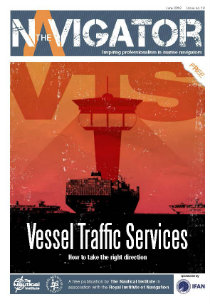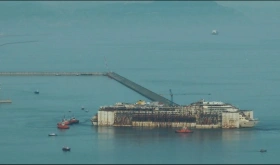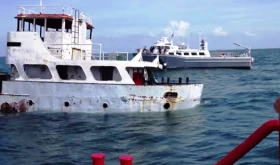Reliability Theory of Structures
The marine industry can improve its performance in designing systems, subsystems and components on which its operations depend on by using risk-based methods and tools. In an environment of increasingly complex engineering systems and structures, the concern about the operational safety of the latter continues to play an important role in their design, construction and operation procedures. A rational and quantitative approach for assessing the failure probabilities and the impact of failure of the structure on its environment (human beings, natural environment) is needed. [Read more…]
Cargo Residues in Hold Bilge Systems
Before loading the cargo hold of a bulk carrier or a general cargo, appropriate inspections should be conducted in order to ensure that all the systems related to the cargo hold are in good working order. One of the key common issues is the cleaning of the hold from cargo residues. Various debris have the “ability” to find their way into the systems of hold bilges making manual removal of such debris imperative. Debris (especially foodstuff) which have been left in the bilges will decay over time giving some of the most unpleasant smells. Hold bilges are usually cleaned using a shovel and afterwards they must be lifted out of the hold. Once the bilge area has been cleaned the next thing to do is to verify and ensure that the rest of the hold bilge systems are in good working order. Therefore the following should be checked and tested if possible: bilge sounding pipes, bilge suctions, bilge non return valves.
Ship’s Geometry and Hull Definition
The form of a ship’s hull can determine the majority of its attributes; stability characteristics; resistance etc. As a result the power needed for a certain speed can also be determined along with the ship’s seaworthiness; maneuvering capabilities and load carrying capacity.
Aluminum Alloys MIG Welding Procedure Instructions
1. Base-metal preparation:
To weld aluminum alloys, operators must take care to clean the base material and remove any aluminum oxide and hydrocarbon contamination from oils or cutting solvents or NC machines coolants. Aluminum oxide on the surface of the material melts at about 2035o C while the base-material aluminum underneath will melt at 650o C. Therefore, leaving any oxide on the surface of the base material will inhibit penetration of the filler metal into the work piece. To remove aluminum oxides, use a stainless-steel bristle wire brush (and/or grinding) or solvents and etching solutions. If grinding is used for cleaning/preparing weld areas it should be paid attention to the brand used since some grinding wheels use an organic binder that leaves a residue behind, that will possibly cause weld porosity. Thus, it is recommended to test the particular brand of grinding wheels before actual use, in a welding test work piece













